Image by skeeze from Pixabay
Excess atmospheric CO2 is one of
the biggest issues threatening our planet.
It is at the heart of the Climate Emergency.
Let's ask scientists about splitting CO2 as a possible solution to the Climate Emergency.
Why not split it?
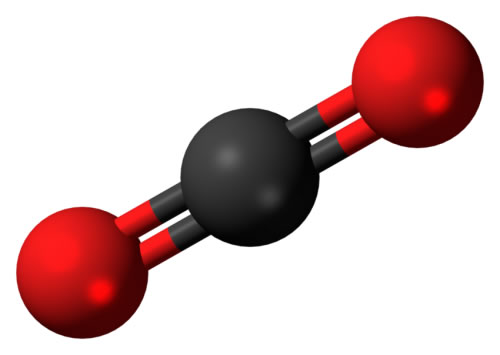
Carbon Dioxide / CO2 = One Carbon atom and two Oxygen atoms.
CO2 Laser UC Davis Research to Split CO2

CO2 Excited CO2 C + 02 Products
|
Can we neutralize CO2 by splitting it? |
Research to split Carbon Dioxide (CO2) was conducted by scientists at the University of California, Davis, in 2014.
CO2 had been split before by others, but the result produced two dangerous products:
Carbon Monoxide (CO) and Ozone (O3).
Carbon Monoxide is poisonous, and Ozone in the air we breathe can damage our lungs. Ozone — in 'The Ozone Layer' — is not dangerous 6 to 31 miles up. It performs a vital service by shielding the Earth below from UV - Ultra Violet radiation.
The UC Davis work is exciting,
and it
inferred a Carbon and Oxygen result.
Consider the profound implications of that.
They took the most ubiquitous greenhouse gas there is and split it into two benign products, neither one by itself a greenhouse gas.
Without addressing in any way the planetary crisis precipitated by excess atmospheric CO2 — which crisis was already a major concern back in 2014 — they indicated that their process might be useful in "alien atmospheres rich in Carbon Dioxide to produce Oxygen."
Their implication of that statement might be:
"We don't think it's useful here on Earth."
The amount of actual splitting that took place was a small fraction of the zapped CO2 passing through their experimental laboratory device.
For the pessimist, that could be the death-knell for furthering any research into this work.
For the optimist, innovation, refinement, insight, computer power and concerted effort to improve a desired result are the essence of scientific research when there is a practical goal in mind.
The lead researcher of the CO2 splitting work was a grad student at the time, is now a professor, and was supported by several UC Davis professors in pursuing this effort.
The doomsday clock is nearing midnight.
Our Earth is truly in the balance.
Action to reverse course is needed now.
It is impossible to overstate the urgency of CO2 splitting efforts like this one. If a splitting process could be perfected, we might have one more planet-saving climate solution in our hands.
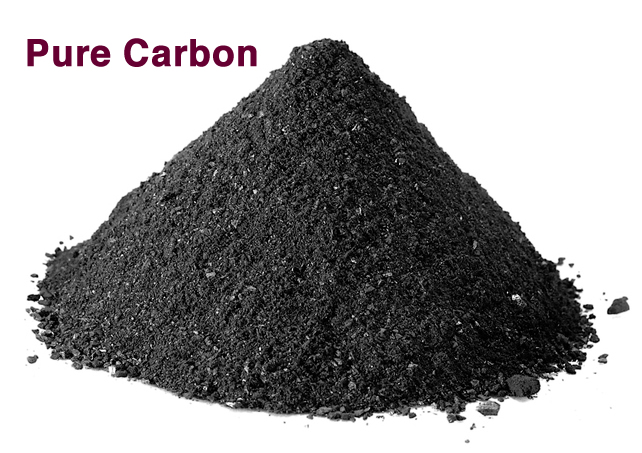
Pure Carbon
If splitting were to become a viable technology, then it might very well become a principal method of choice for excess CO2 reduction.
To be sure, unprecedented scale reforestation, a 95% ending of our slavish reliance on fossil fuels and producing only cars and trucks which remove CO2 from the sky might necessarily complement and be among many other powerful remedial efforts to moderate atmospheric warming.
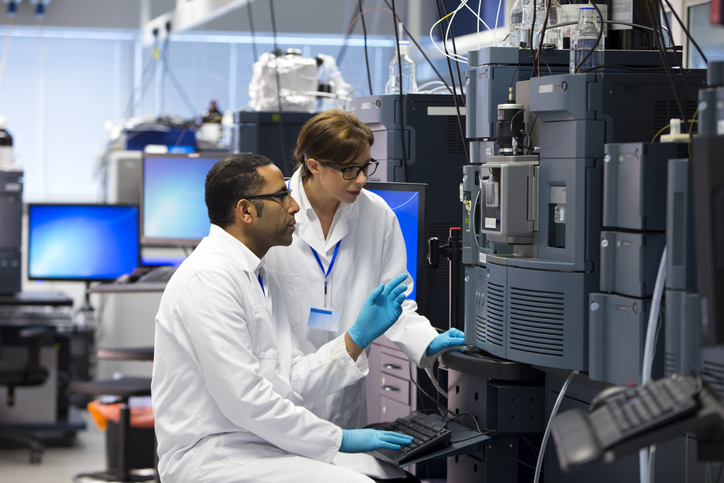
Is splitting CO2 just a pipe dream?
Is the amount of energy required to split even a tiny amount of CO2 off the charts, and thus too expensive to pursue?
There does not appear to be much scientific evidence to justify that assertion. But consider if that were the case — for the benefit such a technology might provide — cost once again would not be the primary consideration.
Some have indicated concerns that if you could split CO2, you would create a new problem: mountains of Carbon that would readily re-attach to Oxygen; then we're back where we started.
Maybe so, and maybe not. If you know something about that dynamic, or have a more general understanding of the chemistry of the possible splitting of CO2, please send your understanding to: Questions & Suggestions
Still, if it could be done, isn't our technical ingenuity sufficient to find dynamic and scalable work-arounds to that possible obstacle?
What about the billions this will cost?
The first question always asked regarding fielding any global solution to reverse Global Scorching is: "OK, but really, what's this going to cost?"
Let World War Two be our model and our answer: There is no ceiling to what we must spend to reverse course. To not understand that is to be unaware of the existential crisis we are now in the midst and mercy of.
Saving our planet, our civilization, our culture, our forests, fields and tundra, our flora and fauna, and all the people inhabiting our globe has no price tag.
Regarding splitting CO2 on a large enough scale, and if that splitting resulted in a civilization-saving diminution of atmospheric heat, then who would choose not to commit to the spend?
In pursuing the research — with a commitment made to scalable effort — only abundant clean solar, wind and Hydrogen energy would be utilized in any global project. ENERGY.GOV
Vaccines for COVID-19 were produced in historically record time. Might a similar scientific effort work for designing CO2 splitting regimens?
THE FASTEST VACCINE IN HISTORY - UCLA HEALTH
(Please continue reading;
go to the top of the right-hand yellow column.) |
It is curious that so little scientific attention has been given to splitting excess atmospheric CO2 — it being by far the main driver of the Climate Emergency .
To the best of our knowledge, the UC Davis research was never followed up by others, nor did they indicate a rationale for not refining the process to bring it up to scale here on Earth.
There is no commentary online or in the literature that can be found about this effort, and there appears to be no one else in the scientific community working on it.
"Well, if no one's following it up, then that must mean it can't be done."
We might agree with that statement if there were others who failed in similar efforts, or scientists who stated in peer-reviewed research that splitting CO2 is neither perfectable nor sufficiently scalable to matter in order to reduce its concentration in our planet's atmosphere.
Repetition to produce a useful result is a long established objective in science and technology. Thomas Edison famously performed 2,774 attempts to get just the right filament for the first practical and marketable electric light. RUTGERS
At least one team of scientists had attempted to obtain more information from the UC Davis crew, but to the best of our knowledge, their correspondence was not answered.
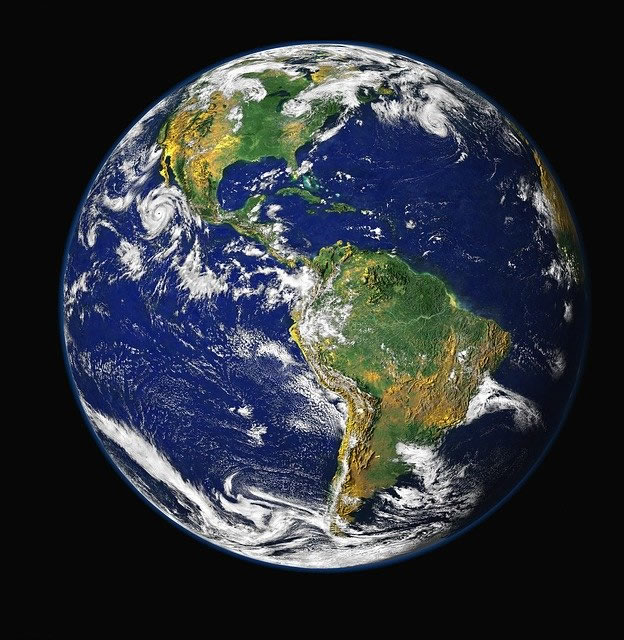
Image by WikiImages from Pixabay
We are left with a mystery,
and a powerful possibility:
• Could the technique be improved, made more efficient, and could it be brought to scale to be one more powerful technical tool to reduce the percentage of CO2 in our atmosphere?
• Could the goal of that invention be to decommission as much CO2 as is necessary so that its atmospheric presence — now at about 419 ppm* — would once again fall below the target of 350 ppm, and in as brief a period of time as human ingenuity can muster?
• If we could reach 350 ppm, could we choose to go even lower — to 280 ppm — and return global temperatures to pre-industrial levels?
Winters would again be very cold, and lakes would freeze. Glaciers would halt their retreat, and perhaps even start growing. Ski slopes everywhere would be covered with snow. Warm winter coats would again be in vogue. Winter Olympics would continue to thrill us.

We've been to Pluto and beyond..
What we dream, we can do.
Given focus, scientific effort and funding...
• Could a Manhattan Project-style effort secure the goal? Could teams of hundreds of scientists and engineers, invited from all over the world, and given unlimited financial resources, perfect potent and efficient CO2 splitting devices?
• Could millions of globally deployable splitting devices then be produced at whatever scale, cost and speed is required to turn the tide?
• If such an endeavor could work — and it was combined with reforestation efforts, launching wildfire quelling Fire Drones, and directing our global vehicle fleet to endlessly devour CO2 — then is it possible we could actually solve a good portion of our Climate Emergency challenge?
Given the extinction-level event our civilization may soon be confronting, that would seem to be an effort worthy of funding and fielding — even if the risk of failure was deemed a possibility.
We're all interested in fielding plans that will reverse global warming. Let's have scientists — and chemists in particular — weigh in concerning the efficacy of this particular possibility.
VICE and SCIENCE • and also PHYS ORG
The Science citation offers a publically available abstract written in accessible language but with limited information. Subscribers to this professional journal, or with access to a university library, can view the full paper, which contains the actual research details.

* Parts-per-million (abbreviated ppm) is the ratio of one gas to another. For example, 419 ppm of CO2 means that if you could count a million gas molecules, 419 of them would be Carbon Dioxide and 999,581 molecules would be other atmospheric gases.
|
|
|

Supercomputers performing billions of calculations
per second
might
support scientific efforts to design
optimally functioning CO2 splitting devices.
|
|
|
Would splitting CO2 actually work??
|
 |
Let's have scientists and engineers weigh in on the matter. If there's an indication that CO2 splitting might be possible in large scale installations, let us build a prototype.
If there's a sense that this technology might in fact have a beneficial part to play, then let's improve it, invest in it and field it.
If there's no positive result, we can say we did our best and put our focus elsewhere. We will learn useful data even if we fail. |
|
|
Powerful solar cells
and space-age batteries are coming.
|
Solar power is poised to become orders of magnitude more efficient than energy sources derived from fossil fuels. There will no longer be a rationale for powering society with dangerous polluting sources.
Electricity from Solar Cells - MIT research has produced working solar cells that can generate 400 times the energy of a standard rooftop solar panel, area for area.
https://news.mit.edu/2016/ultrathin-flexible-solar-cells-0226

MIT Solar Energy Technology
just might change everything...
"The new type of solar is coming. In the next five years, we'll have access to more readily deployable, lighter, very inexpensive solar energy, generating electricity at less than
2¢ per kilowatt-hour."
- Vladimir Bulovic • MIT-nano • Spring, 2019.
ENERGY MIT
2¢ kWh current cost comparison:
In the US, as of 2019, Louisiana had the lowest rates at 9¢ per kWh, Hawaii the highest at 33¢ per kWh and the average for all 50 states— 14¢ per kiloWatt hour.
ELECTRIC COST / Costs are rounded.
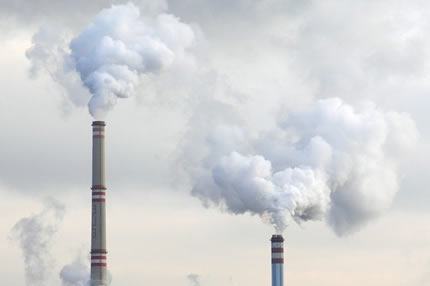
A farewell to fossil fuels forever?
2¢ per kWh is good news for electricity consumers everywhere; that's great news for the environment — there will no longer be any excuse for continuing to utilize fossil fuels or nuclear for producing electricity.
|
The batteries of the future are here now.
They carry more clean energy than ever before. Breakthrough batteries will allow for dynamic range in vehicles, as well as fuel a host of other energy needs.
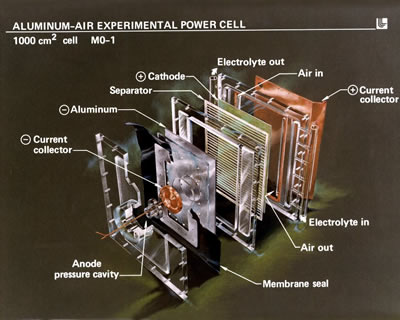
Aluminum-Air Power Cell: Energy.Gov: Public Domain
Light weight Aluminum-Air Batteries are able "to produce electricity from reacting to the Oxygen in the air. They have the potential to produce 8 times the energy of a Lithium-ion battery with a significantly lower weight." However, considerably more research is needed to bring them to the point where they become reliably rechargeable.
WIKIPEDIA and DESIGN NEWS
Aluminum Ion Battery Technology - "An aluminum-based rechargeable all-solid-state battery appears highly promising for meeting future demands. Aluminum, in fact, possesses one of the highest theoretical volumetric (energy) capacities of all elements."
FRONTIERS IN CHEMISTRY
IBM's New Battery Technology - "IBM Research is building on a long history of materials science innovation to unveil a new battery discovery. This could help eliminate the need for heavy metals in battery production and transform the long-term sustainability of many elements of our energy infrastructure."
IBM
Photo Acceleration of Lithium-Ion Charge
And if we wanted to stick with popular Lithium-Ion batteries, then we could expect that "..the charging rate of a cathode can be dramatically increased via interaction with white light." Check out this timely and important work: "Photo-accelerated fast charging of Lithium-ion batteries." NATURE
Nobel Prize laureate's recent work: "Lithium-Ion Battery Inventor Introduces New Technology for Fast-Charging, Noncombustible Batteries - A team of engineers led by 99-year-old John Goodenough, professor in the Cockrell School of Engineering at The University of Texas at Austin and co-inventor of the Lithium-ion battery, has developed the first all-solid-state battery cells that could lead to safer, faster-charging, longer-lasting rechargeable batteries for handheld mobile devices, electric cars and stationary energy storage."
UNIVERSITY OF TEXAS |
|
|

 |

Ismay declares:
"But this ship can't sink."
Thomas Andrews replies:
"She's made of iron sir...
I assure you she can, and she will."
Like the ill-fated Titanic, our global ship can certainly sink— yet unlike the Titanic, it doesn't have to if you and I choose to save it.
We still have time to reverse course. The most important thing any of us can do
is to get involved. That means all of us who are not climate scientists or movers and shakers in government can still choose to get involved on a meaningful level.
Let's make it our business to direct governments and corporations
to make the approaching climate disaster our top priority. It's now up to all of us to rise to the occasion.
March, demonstrate, join and/or support climate-related organizations, meet with others, write and call legislators, get on the phone with a corporation that pollutes, become informed about the issue. Don't take it for granted that people are working on it and therefore "I don't have to." It doesn't matter if you are 18 or 80... it's your voice that will shape the future.
With enough voices joining the chorus, we can create a paradigm shift that will change the course of history. With enough companies choosing to do the right thing, we can look the future in the eye. With governments and international organizations getting on board, we can change the trajectory of Carbon Dioxide, and implement any course of action that will turn the tide.
|
|
|
Are our forests far away?
They are as close as our next breath.
|
|
|
The world's forested regions produce a good portion of the Oxygen we breathe — about 20% of it. They also sequester CO2 — the CO2 nature intended, and some of the excess CO2 industrial civilization has added to the mix.
"Forests cover 31 percent of the world's land surface, just over 4 billion hectares. This is down from the pre-industrial area of 5.9 billion hectares." 2012 Data • EARTH POLICY • 1 hectare = 2.47 acres.
We think those three trillion trees have our back. Sadly, the opposite might be the case.
________________________________
How much excess CO2 is in the sky now?
How much more is coming down the pike?
It's important, so let's do the math...
It is very difficult for us to conceive of something floating up there in our atmosphere as having weight. Yet, doing so allows us to begin to appreciate the gravity of our situation.
If we swap out CO2 for jumbo jets, we can get a feel for how much weight that excess CO2 is; and, we can also get a vague sense of the vast atmospheric volumes that human-generated CO2 floating in our sky inhabits.
A gigatonne is 1,000,000,000 tonnes. That's one billion, and equivalent in weight to three million Boeing 747 jets. ENERGY EDUCATION CANADA
Now multiply three million x 950..........
= 2,850,000,000 jets' worth of weight.
Yes, that's 2 billion 850 million 747's.

A Boeing 747
"From 1850 to 2019, 2,400 gigatons of CO2 were emitted by human activity. 950 gigatons went into the atmosphere. The rest was absorbed by oceans and land."
THE WORLD COUNTS
Now add to that 'If all our forests burn...'
170 tonnes (187 tons) of CO2 is released with each hectare of forest burned. If all the world's forests burned—4 billion hectares—the volume of CO2 released would equal 680 gigatons.
That infusion — which might occur over the course of this decade and the next — is just 28% less than all of the anthropogenic (human caused) CO2 introduced into the sky since 1850 — a span of 150 years.
If we conservatively factor out 'oceans and land,' the impact is still equivalent to about 39% of that 150-year CO2 addition to the sky.
That astronomical amount is far beyond our ability to conceptualize: If we don't intervene to alter that ominous current trajectory, over 265 gigatons of CO2 might well be introduced into the atmosphere over the course of this and the next decade from incinerated forests alone.
That's in addition to the 30 to 40 gigatons of car-truck-bus-rail / large ocean going ship / industrial / military / airline / home and office / oil and gas drilling / coal / fracking / agriculture and farming generated CO2 we currently pump into our fragile global atmosphere every year.
Ongoing CO2 pollution always increases average temperatures which in turn always increases the area of wildfires which in turn always releases more CO2.
It is the most dangerous vicious cycle we might imagine, and it is happening right now.
The world's forests — profoundly overwhelmed by growing atmospheric heat and desert-like dryness — may careen toward a tipping point in the next few years. The stage is now set for uncontrollable burning, which in turn will usher in a new and perilous phase for life on Earth. The Anthropocene — the current epoch — will give way to The Calorocene: The Age of Heat.

Forests which no longer exist can no longer sequester CO2, nor make Oxygen.
Setting aside the grandeur of our forests, the products we derive from them, or the flora and fauna that thrive in their majestic halls, the result would still be catastrophic due to the monumental increase of atmospheric CO2.
Now let's add-up the total amount of excess CO2 which might accumulate in the sky in the next 10 to 20 years if we fail to change course: 700 to 1,000 gigatons.
The initial consequences will be a much hotter planet seemingly overnight; over time, we might very possibly experience the worst-case scenario: our planet Earth becomes too hot for human habitation.
When it comes to wildfires, talk of sorting it all out by 2050 is unrealistic. What is required—in this most important of choices our civilization might ever make—is to bring wildfires completely under control within 5 to 10 years.
This un-natural disaster is not something that will happen in the distant future. It is an event, or series of events, which has already begun.
We can avoid the worst of it if we commit to prioritizing a robust worldwide FireDrone navy.
Mega blazes which cannot be contained will destroy a good portion of our forested lands, all over the world. They will also emit so much CO2 that nothing we will subsequently do to address the many other climate issues will matter.
"Yes—but what if that analysis is wrong? What if the forests don't all turn to ashes over the next two decades?"
It's possible we could be wrong.
But are we willing to take that risk and not address the very likely possibility—that without protection—most of our forests could actually burn with no resurrection possible?
Gambling with our future is not a sensible strategy for insuring our civilization's safety.
We would then be thankful for the blessing of time which permitted us to build an invincible global Fire Drone defense system, and at the same time, clamp down on ALL CO2 emissions whenever and wherever they propagate, as well as implementing technologies to REMOVE CO2 from our overburdened atmosphere.
In just the last two years—2019 and 2020—we all witnessed an unexpected, unimaginable, and awesome new phenomenon — intense and seemingly boundless Firestorms (also known as Megafires) wreaking havoc in Australia, California, Russia and other locales. Our attempts to control them were scorned and brushed aside by an unforgiving Nature.
There's no reason to presume that those events were a fluke— more likely they are a terrifying harbinger of what is to come.
We can no longer call them forest fires or even wildfires: Firestorms are the new normal. They are intense and travel faster than any other wildfire. They create their own wind system. They let us know that we've entered an uncharted and lethal phase of Climate Change.
The cause of this ongoing threat?
CO2 continues to flood the sky in break-neck quantities, every minute, every hour and every day.
New CO2 adds to the thousands of gigatons floating up there— and the result is atmospheric temperature increase with no end in sight.
|
|
In the past, we were unable to see the specific, identifiable and concrete results of anthropogenic CO2 release into the sky. That allowed us to pretend things weren't so bad.
Today, the evidence of this burgeoning catastrophe is all around us, and the plight of our global forest range exemplifies and renders the issue as plain as day.
We all bemoan the heartless and criminal deforestation of the Amazon by Brazil, yet we — in our gross ignorance — are about to inflict a worse fate on our own precious forests.
Let's appreciate that Fire Drones will do more than protect forests, property, and prevent the loss of countless lives. They will also be crucial to our survival as a species and a civilization.
Fire Drones will save our forests, and by extension they will also save our future. |
|
|
|
Did you forget about the Climate Emergency?
|
|
Today we are hot to do something, to stand up to the polluters, to demand serious government involvement, to overcome our own excuses and to know in our gut that we can make it right.
We just need to get more people involved, and we just need to energize their participation at every level to really understand what we already know and experience.
Right.. but then comes next week, and we read a good book, watch a movie or take a vacation to somewhere magical... and then we remember that we forgot. And then we experience painful guilt, shame and remorse. "WHAT is wrong with me??"
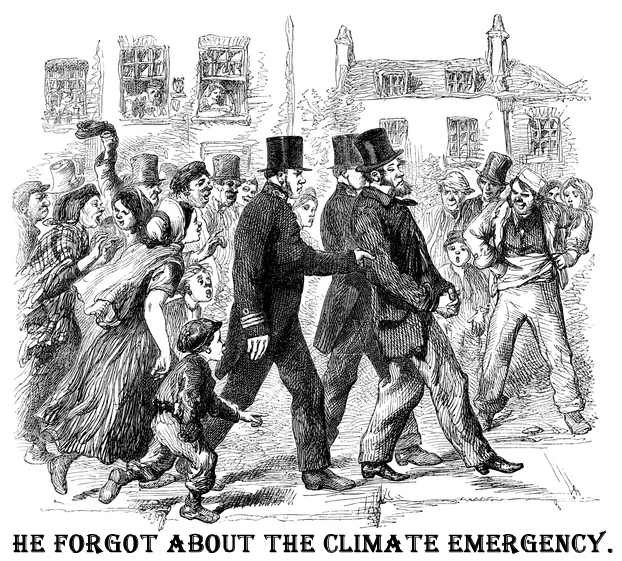
"He forgot about the climate emergency."
In the morning we're in a conversation with someone who tells us to "eat, drink and be merry for tomorrow..." and we do our damnedest to cajole, convince and set those good folks straight.
"If they only knew that it is exactly that sort of thinking that will prevent turning things around." And, well, you know... an hour later we are thinking and speaking the same way as those poor souls. Heck, it really is too big, too awful, and the people in charge seem to have no darned idea, no plan, no courage, other than lip-service and a litany of glittering generalities. |

I forgot...
Some droll advice for the "guilty that I forgot about the Climate Emergency" syndrome is an affirmation that might sound like this:
"I forgive myself for forgetting, and I know it's OK that I forget. I know that I will do it again.
I know that committed people around me will also forget from time to time, and I will do my best to not judge them for the lapse."
Finally, there is the guilt that we still may be driving a car that pollutes (herendously), or are not careful about our recycling, or that our home or apartment is warmed by fossil fuels.
We will strive to do our best, to do what we can afford, what we can manage, and society and science will have to meet us in the middle with climate awareness and progress. |
|
|
|
Can we make the same commitment to defend
our living planet as we do to guard our freedom?
The Statue of Liberty has always been a symbol to the world to do the right thing.
There is today an amazing disconnect between the lengths we will go to protect our freedom, and the lack of interest, commitment or action to preserve the very world we depend upon.
Liberty is worth championing. That same commitment we make to insure and protect our freedom can also now do the same for our environment, our people and our planet.

Image by noelsch from Pixabay
NATIONAL GEOGRAPHIC - SEA LEVEL PROJECTIONS
If we continue to burn fossil fuels at the current rate, and ignore calls to remove CO2 from the atmosphere, New York City — and all of Earth's coasts, coastal cities and islands — may succumb to the rising seas within the lifetimes of our children and grandchildren.
|
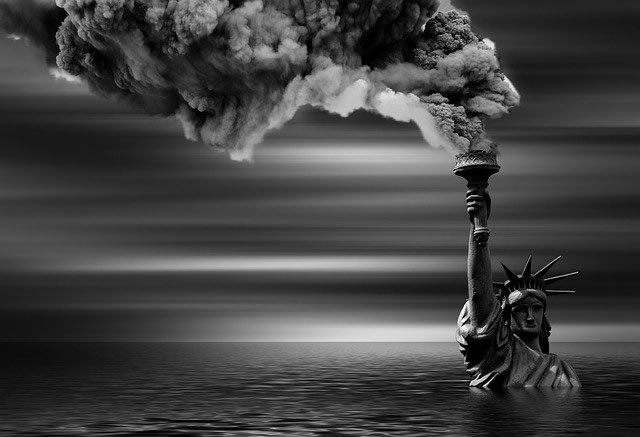
Image by Gerd Altmann from Pixabay
If all of the frozen water in the Arctic...
...Antarctica, Greenland and the glaciers were to melt, the water could rise 216 feet above current sea levels. The awesome image above is intentionally dramatic, and the water level depicted is much higher than predicted.
NATIONAL GEOGRAPHIC • SCIENCE MAGAZINE
But still, look at the picture to the left. Imagine that actual sea level prediction — at Lady Liberty's knees — inundating all the coastlines and coastal cities of your planet.
The good news is that we can reverse all of the negatives... and it will take powerful commitments by a single-minded world community to make this a reality.
It will take an awareness that the last best time to meaningfully act is now. |
|
|
|
Global Warming sea
level rise
may be reversible to some degree...
HALF of all sea-level rise is due to thermal expansion of the seas — the other half is meltwater from glaciers, Greenland and Antarctica. NATIONAL GEOGRAPHIC
When we stop putting CO2 into our atmosphere — and begin removing it in global scale quantities with new forests and CNV vehicles — not only might the melting cease, over time sea levels will also begin to fall due to the dual action of thermal contraction and a naturally occurring refreezing.
"Due to the large heat capacity of the ocean and amount of time it takes for water to circulate there is a delay before the full effects of warming can be seen. This also means that there would be a delay between a reduction in atmospheric temperature and the cooling of the oceans." NORTH CAROLINA KING TIDES and NATURE
A projection of allowing all the ice and snow to melt...
|
|
|
|
|